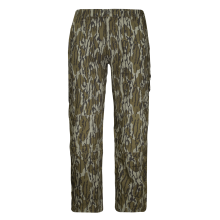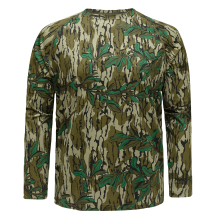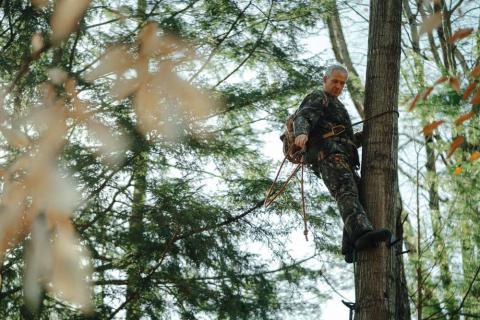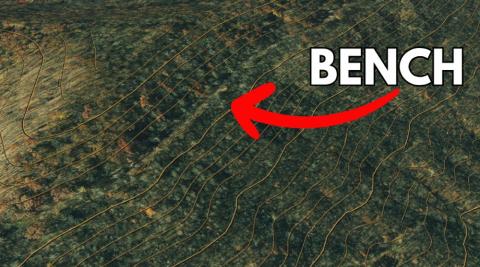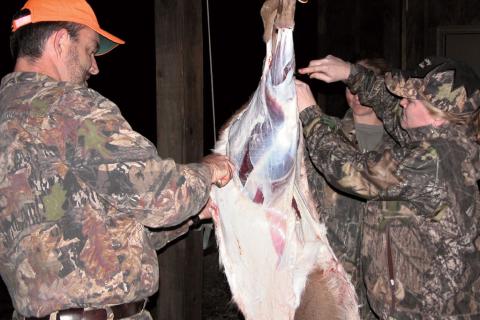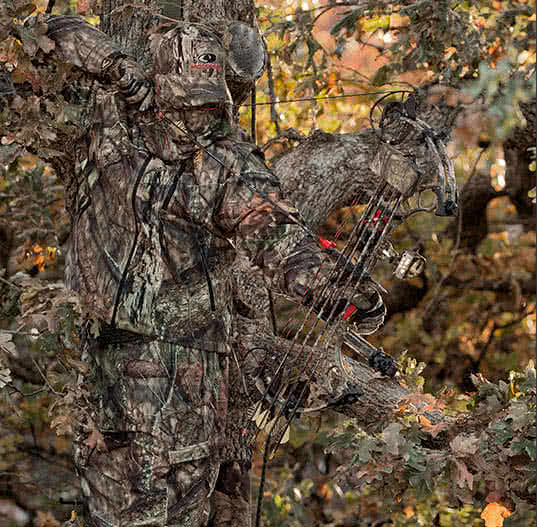
Phillip Gentry
What is the Flathead Catfish?
To the casual angler, a catfish is a catfish is a catfish, but to catfish anglers, the different species of catfish are as different as night and day. One of the most unusual, and mysterious catfish species that can be found in much of the continental United States grows to particularly large sizes, has a ghastly puke-stained coloration, and prefers to eat it’s prey alive and whole. It’s the flathead catfish.
This large aggressive cat should have its own musical score that plays whenever it swims by as it is typically the top predator in most freshwater bodies. A flathead is easily distinguished from other cats by its flat head, protruding lower jaw, and small beady eyes. Its coloration goes from high yellow to sea monster green with a mottled tone. It prefers dark, hidden holes around undercut banks, logjams, and big rocks and is more active at night and during warmer weather.
The flathead catfish is native to river basins west of the Appalachian Mountains, including the Mississippi, Missouri, Ohio, and Rio Grande River basins, extending from the lower Great Lakes region in the north to the Gulf of Mexico and Mexico in the south. While its native range ordinarily did not include Atlantic coast state rivers, it has been widely introduced and is now an invasive species in many areas along the East Coast.
Where to Find Flathead Catfish
- While most catfish tend to get lumped into the category of bottom dwellers, the flathead is not only a bottom dweller, but a highly structure-oriented fish as well. During the pre-spawn, flatheads tend to roam a little more because they are feeding up, but during and after the spawn, flatheads tend to hug tight to cover.
- Seasoned catfish anglers claim that blue catfish will roam and even suspend up in the water and so will channel catfish, but it’s very important to find structure and fish tight to it if you’re after flatheads. Flatheads can be caught during the daylight hours but are especially fond of foraging and feeding at night, as their sensory organs allow them to hunt better in the dark.
- While flathead catfish are found throughout our lake and river systems where they reside, during hot weather months, flatheads will often gravitate to moving water at the headwater area above lake and tailraces below impounded dams.
- To find flathead catfish, look for sections of water that have deeper water in the area of secondary structure – blow downs and laydowns and stumps. During their spawning season in late May and June, look for steep muddy banks with structure that you can see above water. Those are locations where the females will back in against the soft bank and hollow out a nest.
- In larger reservoirs flathead catfish will follow a secondary river channel where it flows through a good stump studded flat. Anywhere along the run anglers can catch flathead catfish that are running the edge of the walls looking for live baits.
- Another prime flathead catfish spot is a blow down tree after rising and falling water has washed a number of trees off the bank. In many cases, blow down trees may be completely covered by water so use your sonar electronics to locate the best spots to anchor and fish.
How to Catch Flathead Catfish

- Although flatheads have a well-known reputation for eating whole live baits year-round, in riverine or heavy current conditions, fresh cut bait is preferable because a live bait will hide under bottom structure and may not be easy to find by the fish.
- To consistently catch flathead catfish, the catfish angler needs to be equipped with medium heavy tackle – a stiff 6 – 7-foot bait cast rod is preferred along with heavy bait cast reels spooled with 40 – 50-pound braided line. The braided line is useful for hauling big catfish quickly away from log jams and snags where they hide.
- After the spawn, it’s best to vary your fishing methods for flatheads between suspend drifting, using the same rods and the same set-up used for anchored out fishing. Instead of anchoring, let the boat go with the flow and keep your baits about a turn or two off the bottom. Suspend drifting works best in areas that have sections of isolated cover.
Whether you consider them ugly or beautiful, flathead catfish are notoriously strong fighters, given to bulldozing back into heavy cover when hooked regardless of the angler’s best efforts. It’s for this reason and more that many catfish anglers will gladly give up a good night’s sleep to tangle with a true freshwater monster.
Read More: Summertime Fishing for Channel Cats













